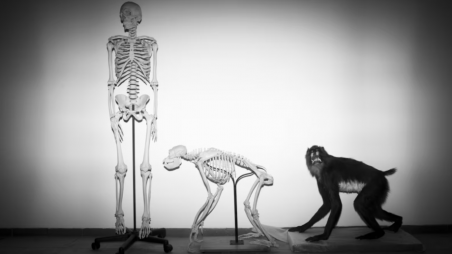Why don't humans have a tail? A new research holds the answer

In his childhood, geneticist Bo Xia found himself pondering the peculiar absence of a tail. This question resurfaced years later during his doctoral studies at New York University (NYU), especially following a tailbone injury.
Xia, along with his colleagues, embarked on a journey to unravel this mystery. Recently, they unveiled a significant discovery: a genetic mutation, shared by humans and apes, potentially linked to the loss of tails in their ancestors some 25 million years ago.
The researchers' breakthrough came after painstaking efforts, culminating in the publication of their work on February 28, nearly 900 days after its submission to Nature. Their study involved extensive experimentation, including the development of various strains of gene-edited mice, to validate the genetic alterations' anticipated effects.
The absence of tails in apes, unlike most monkeys, has long intrigued scientists.
Xia's investigation led him to focus on a gene known for its role in tail formation, T, which is the equivalent of TBXT in humans.
Initial findings revealed a striking difference in TBXT between humans and other primates, such as monkeys.
Humans and apes carried a unique DNA insertion in TBXT, absent in tailed primates.
This insertion appeared to result in a truncated protein form, potentially influencing tail development.
Subsequent experiments on gene-edited mice corroborated these hypotheses, demonstrating a spectrum of tail abnormalities mirroring those observed in humans and apes.
However, the journey towards elucidating this genetic mechanism was not without its challenges. Despite initial excitement surrounding their findings, critical experiments remained incomplete at the time of the preprint's publication.
It was imperative to demonstrate conclusively that the introduced genetic insertion could induce tail loss in mice, a pivotal aspect missing from the initial release.
Further experiments ensued, enhancing the robustness of their study. The researchers meticulously engineered additional mouse models, aiming to replicate the genetic alterations observed in humans and apes.
These endeavors not only validated their initial findings but also uncovered additional insights into the genetic underpinnings of tail loss.
The expanded scope of their investigation revealed a complex interplay of genetic factors contributing to tail development.
While the identified genetic mutation played a significant role, the researchers identified numerous other genes potentially involved in tail loss across different species of apes.
The implications of their research extend beyond evolutionary biology, sparking discussions about the significance of tail loss in ape evolution.
While some speculate on its role in bipedalism and arboreal locomotion, others remain cautious, citing conflicting evidence from fossil records.
Xia's team's work represents a significant step forward in understanding the genetic mechanisms underlying tail loss and its evolutionary implications.
Their meticulous approach and groundbreaking findings underscore the intricate complexities of evolution and the role of genetics in shaping species' traits.
This article has been adapted from "Why humans and other apes lost their tails — twice" by Ewen Callaway, published in Nature on 4 March.


 Keep updated, follow The Business Standard's Google news channel
Keep updated, follow The Business Standard's Google news channel
















